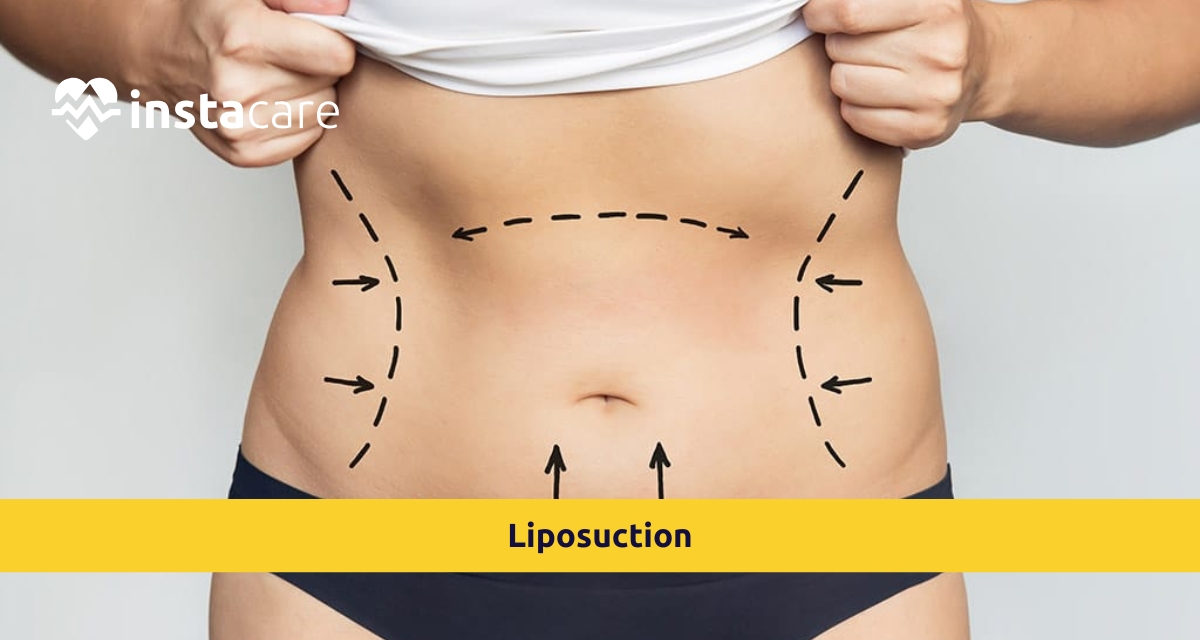Liposuction surgery is rated as the most popular cosmetic surgery techniques through which people can effectively lose cellulite. It just so occurs to be of most benefit to those who have localized fat deposits that do not respond to diet and exercise. Liposuction Guide: What it is, how surgery works, Recovery and Results, and FAQs to assist individuals in making the decision of having the surgery.
What Is Liposuction?
Liposuction, or lipoclastic or body sculpting, is the
surgical technique that removes unwanted localized fat deposits in almost every
part of the body. Liposuction is not to be utilized as a weight loss system; it
is purely corrections for that has nearly achieved their ideal weight but have
zones of obnoxiously unyielding fat that is ineffectually ignored by diet and
exercise.
Typical Body Areas Treated with Liposuction
It is done in all body parts, such as the following:
- Abdomen: Most people have liposuction for a flatter abdomen.
- Thighs: Liposuction is used on both inner and outer thighs,
creating a balanced silhouette.
- Hips: The "love handles" and the excess fat around
the hips can be removed by liposuction.
- Arms: Upper arms tend to store fats, which are usually hard
to burn by traditional methods.
- Back: Liposuction can help out with unwanted pockets of fat
in the upper and lower back.
- Chin and Neck: A double chin is one area many patients turn
to get rid of or reduce with liposuction. More fat in the neck area as well.
- Calves and Ankles: Even the calves and the ankles sometimes to give that svelte look.
Procedure Liposuction
Consultation before Surgery
The first consultation is with a board-certified plastic
surgeon. This is one of the most important steps in building trust and
understanding exactly what the patient wants. The surgeon will have to look
into the patient's health condition and discuss their medical history and also
explain the procedure to the patient. Some of the key areas that should be
covered are:
- Medical History: The doctor should be informed about the
number of previous surgeries, some medical conditions, and any drugs.
- Expectations: Discussion of the wish to achieve realistic
expectations from what the surgeon can do
- Physical Examination: The surgeon must inspect the regions involved so that appropriate techniques are done.
Anesthesia
For liposuction, one will require the kind of anesthesia that the extent of procedure requires and the area needed. Some of the options involved are:
- Local Anesthesia: This is used in small areas, and the
patient will be aware but numb throughout the time of procedure.
- Sedation: This is given to make the patient relaxed, but
will remain conscious
- General Anesthesia: In surgeries which take long, and the patient will be unconscious throughout the surgery
Surgical Procedures
Liposuction also uses various techniques, and each of them
has its own merits:
- Tumescent Liposuction: It is the most commonly performed
procedure wherein a solution called tumescent, which is a saline solution of
anesthetic and epinephrine, is injected into the fat being targeted. It allows
minimal flow of blood and swelling.
- Ultrasound-Assisted Liposuction: Use of energy from the
waves is utilized in order to break the fat cells down in a liquid state prior
to extracting these out of the body thereby helping fats to come off with
minimum damage done to the other tissues nearby
- Laser Assisted Liposuction: Melting fats with laser energy
aids liposuction through the lasers and their removal with the aid of a cannula
by increasing heat that causes skin tissues also tighten up.
- PAL: It involves using a vibrating cannula to facilitate fat effusion. It decreases work output by the surgeon.
View More: 9 Best Ways To Reduce Belly Fat
Operative Technique
Typical steps of the procedure are as follows:
- Skin Inclusion: They can be done on the inside part of the
body to create a minimal scar.
- Tumescent Solution: Administered by the surgeon straight
into the fatty portions of the body. The site to be treated is dulled, and the
vessel walls are constricted, meaning it limits bleeding.
- Liposuction Fat Removal: A small and slightly narrow
instrument also called as a cannula is made to be slid into the cuts. He then
slaps the cannula back and forth to emulsify the fat which he then vacuums out.
- Closing Incisions: After the desired amount of fat has been removed, the incisions are closed often with sutures. In some cases, adhesive strips or glue may be used instead of suture.
Recovery after Liposuction
Recovery from liposuction is individualistic and related to
the extent of surgery. As it is surgery, appropriate knowledge of recovery will
help in proper healing.
Immediate Post-Operative Care
Post procedure, patients are commonly monitored in a
post-anesthesia recovery area. Depending upon the anesthetic used, they will be
dazed or confused. Once stabilized, they can often be discharged the same day
with a friend or family member to assist.
Pain Management
This normally is given after the liposuction process because
one is bound to feel uncomfortable, swollen, and even bruised. Pain medicine
will most likely be administered to help with the pain it will not cure the
ailment. Patients will be guided by the surgeons on how to use the pain
medicines and manage it.
Activity Restrictions
They should keep low activity for the first weeks. All heavy
exercises and lifting should be avoided for it might stress the cuts.
Nevertheless, light walking is recommended since it will stimulate blood flow,
which will promote healing.
Compression Garments
- Compression garments are typically recommended to be worn for several weeks following the procedure. Compression garments decrease the swelling, support healing tissues, and help skin adjust to the new body contours.
Follow-Up Appointments
The patient needs to see the surgeon again for checkup as
the wound heals and or any complication comes up. These follow-up visits will
involve the surgeon that will assess the result and confirm proper healing on
the part of the patient.
Effects of Liposuction
The results of liposuction are dramatic in appearance since
changes are visible almost immediately. However, the final results take months
since swelling and full healing may take time.
Visible Changes
- Body Contours: Improvement in body contours is one of the
main benefits of liposuction. Patients usually achieve a difference in their
appearance and feel more confident about their body, especially at parts such
as the abdomen, thighs, and arms.
- Fat reduction: fat loss varies from goals set among people and areas to be treated; however, patients usually obtain impressive losses of localized fat.
Effects Long Term
The impact of liposuction is lifelong; however, a healthy
lifestyle must be maintained as this is the shape it is expected to provide.
Weight gain would compromise the work done by the procedure, since multiplying and
expanding fat cells remains
Please book an appointment with the Best Plastic Surgeon in Lahore, Karachi, Islamabad, and all major cities of Pakistan through InstaCare, or call our helpline at 03171777509 to find a verified doctor for your disease.

